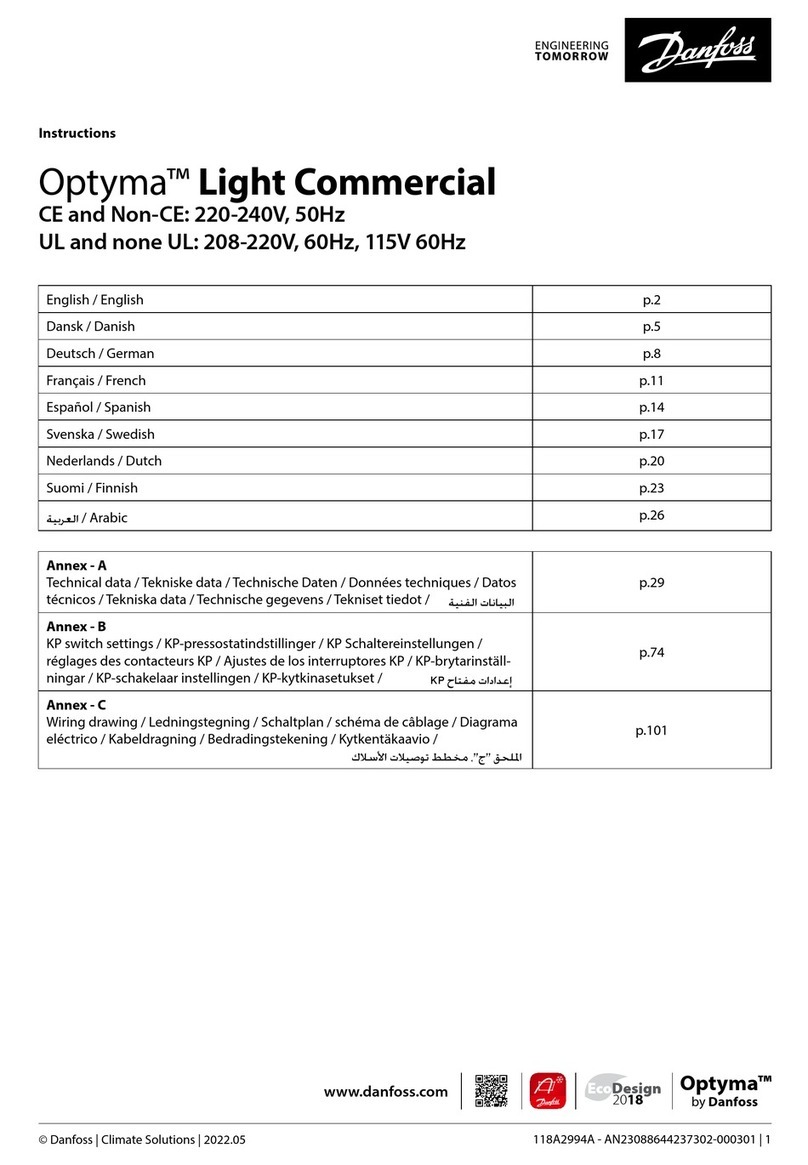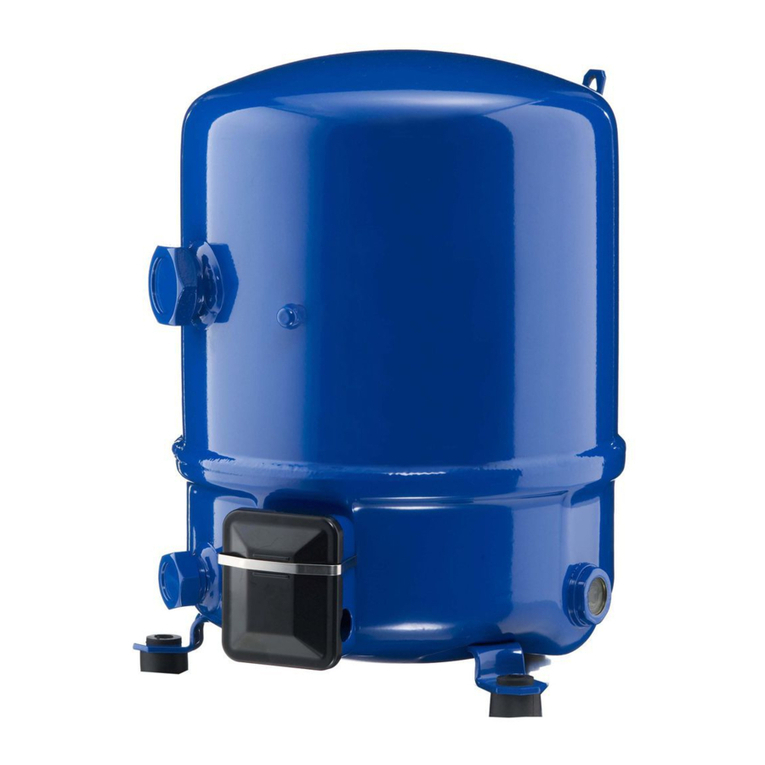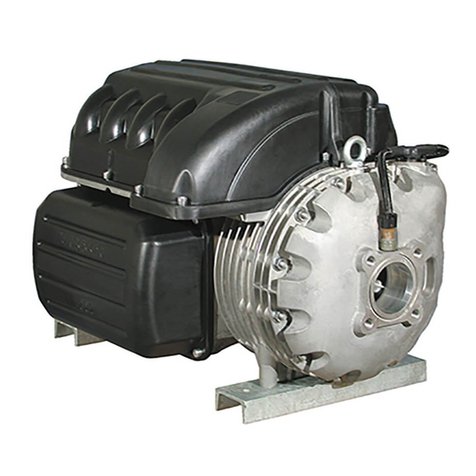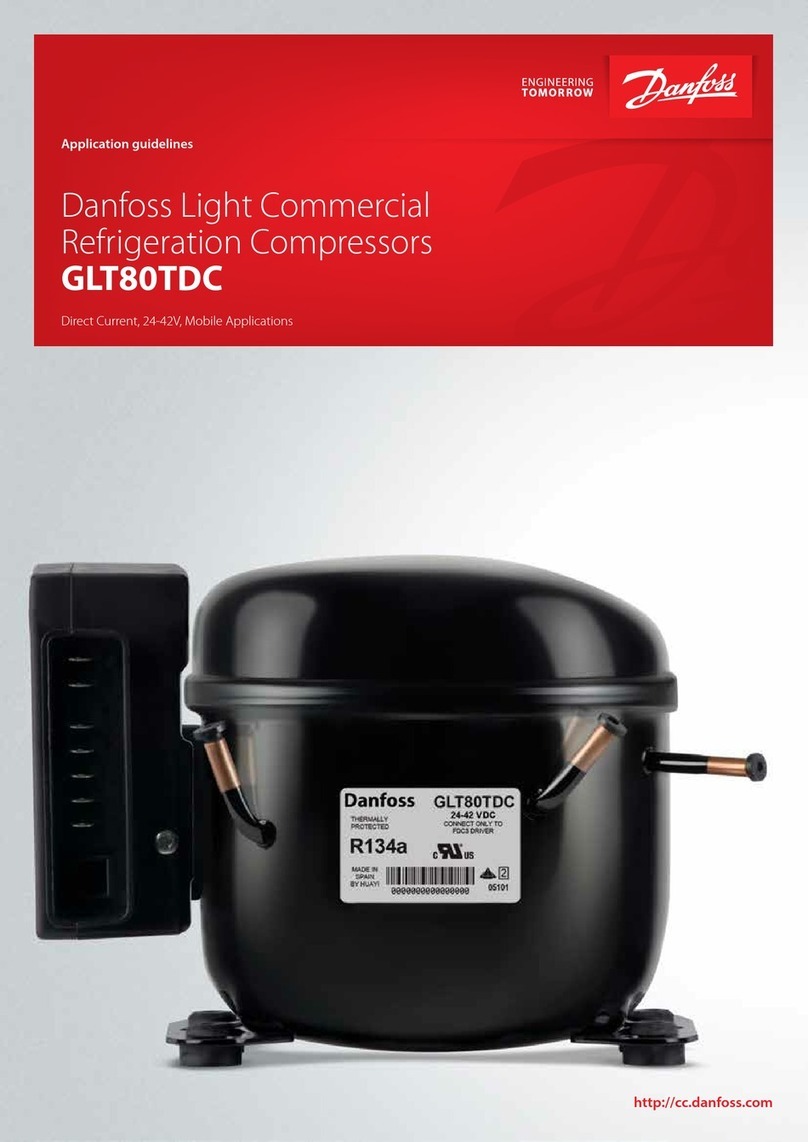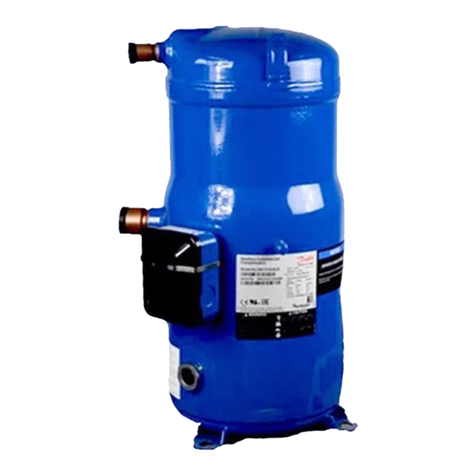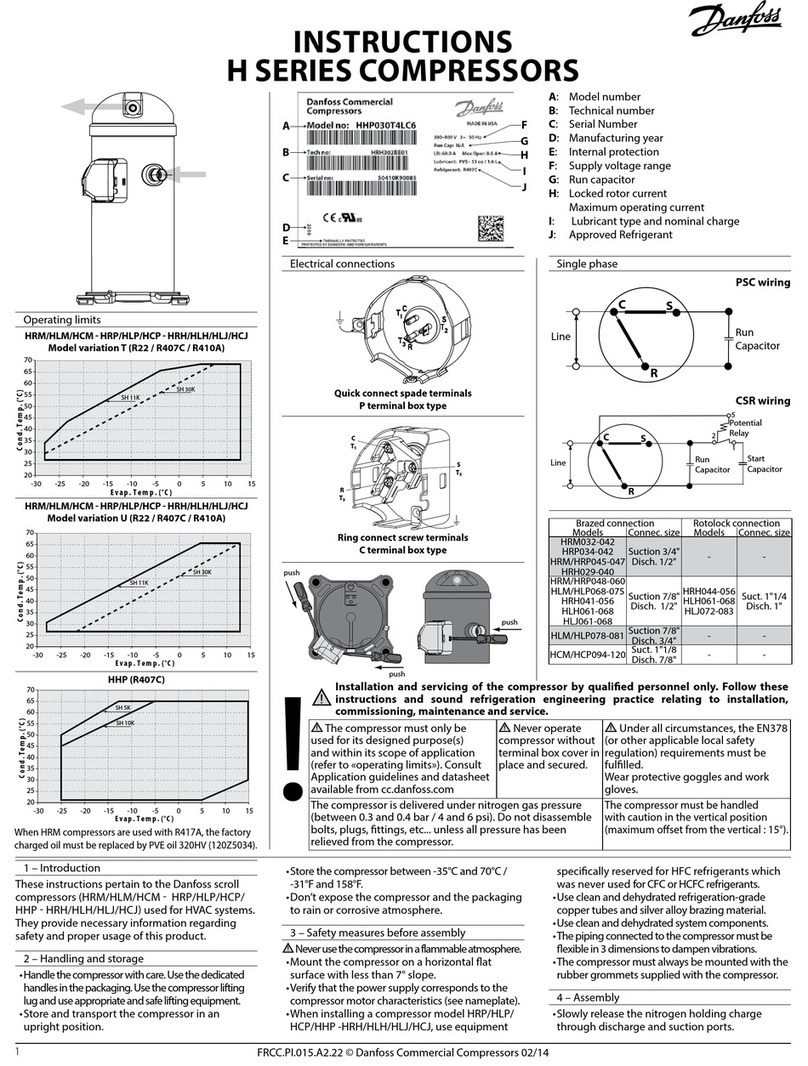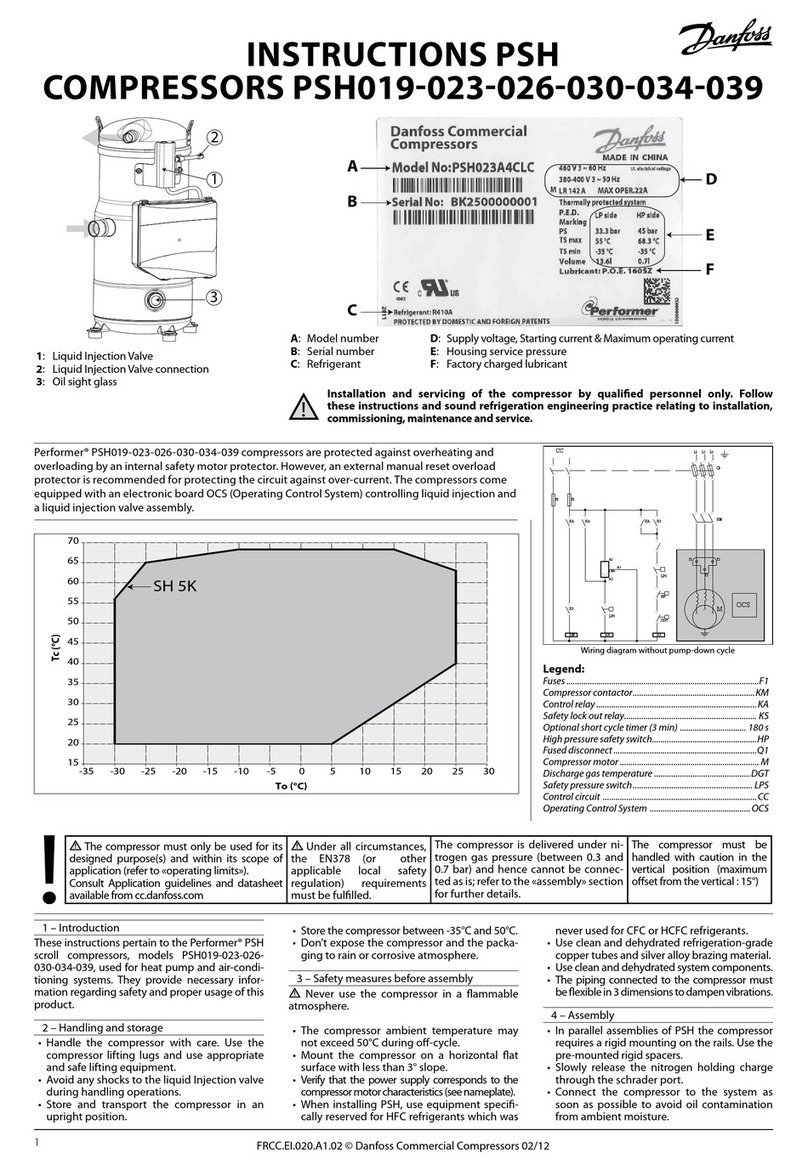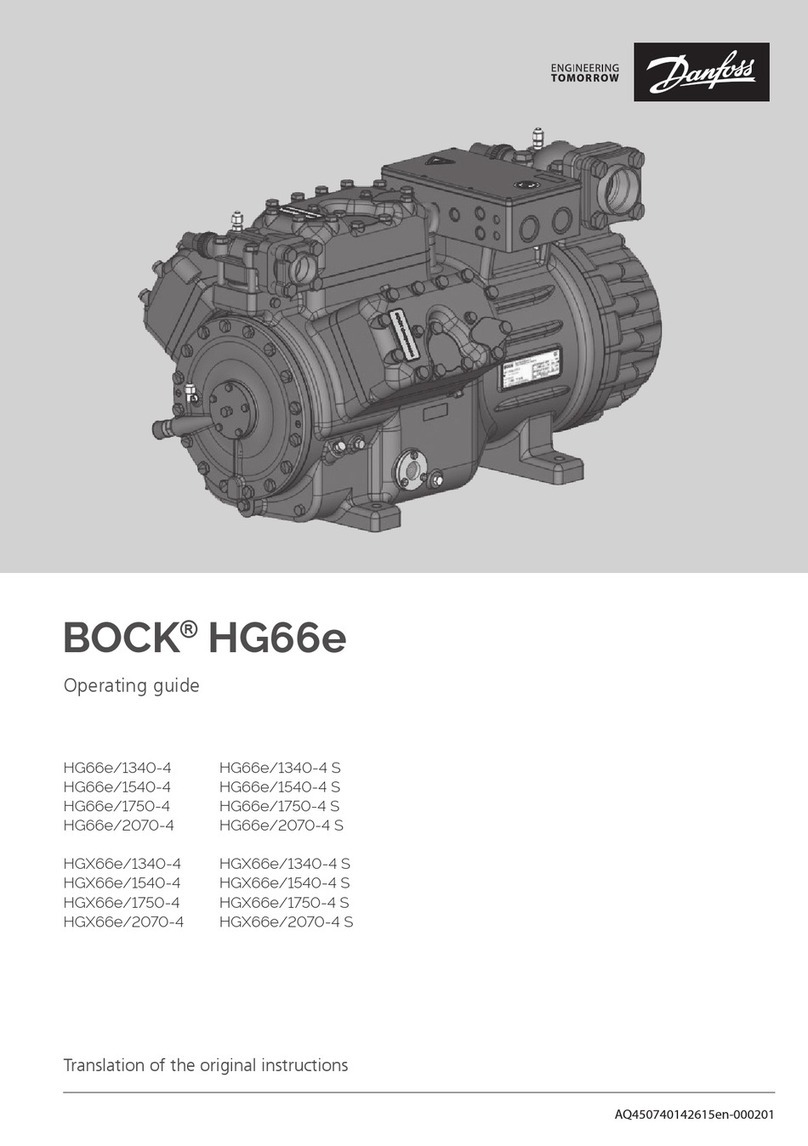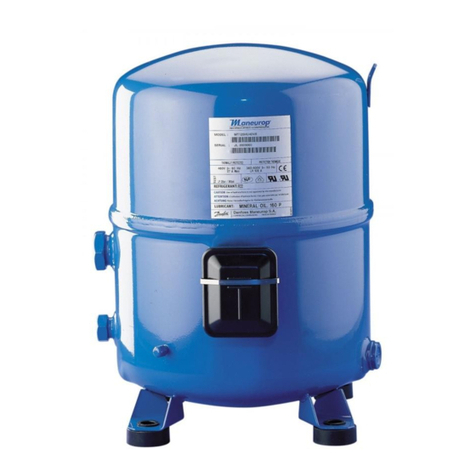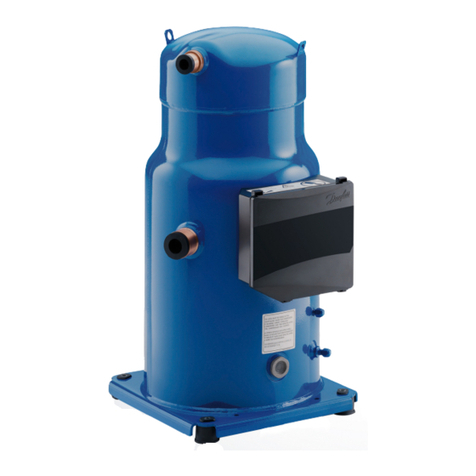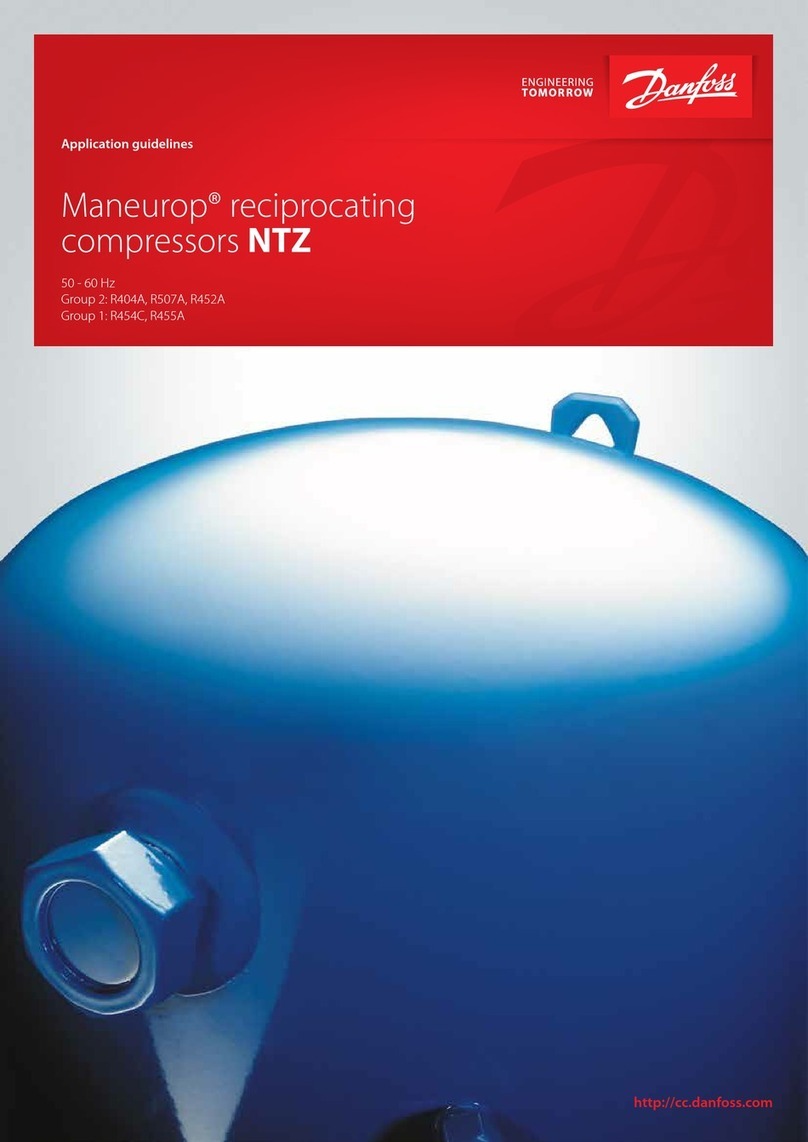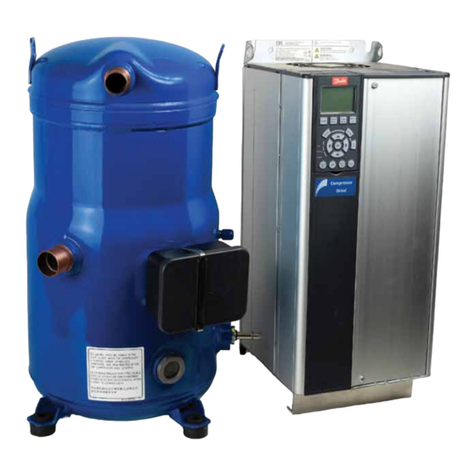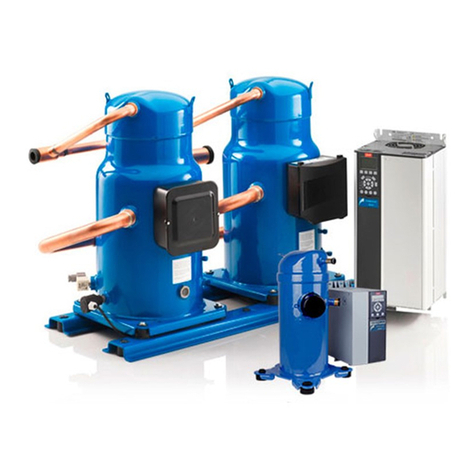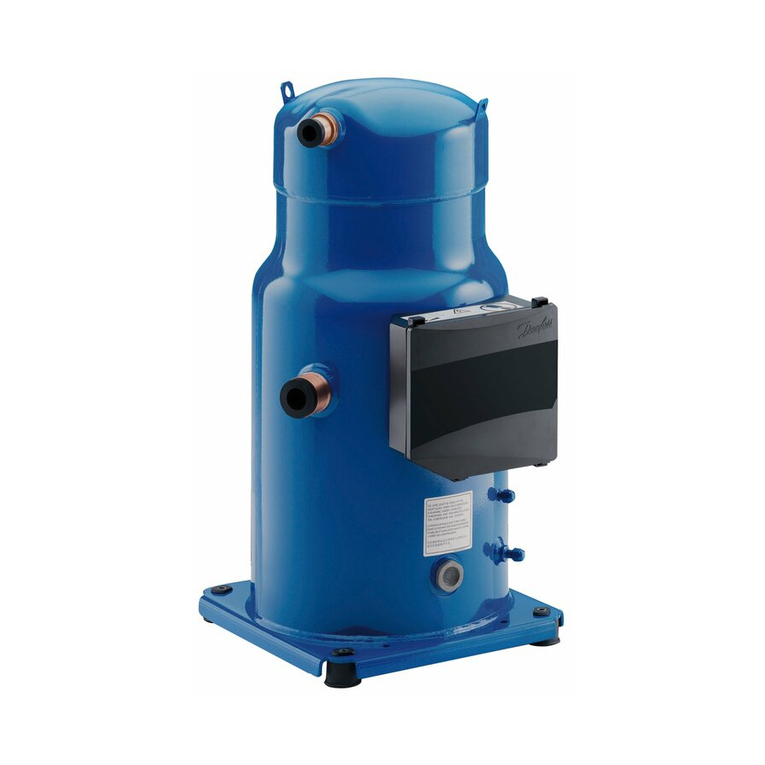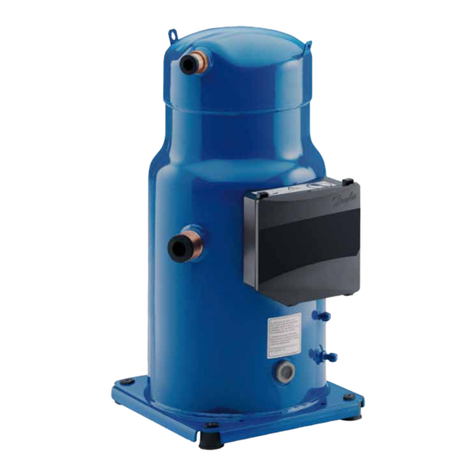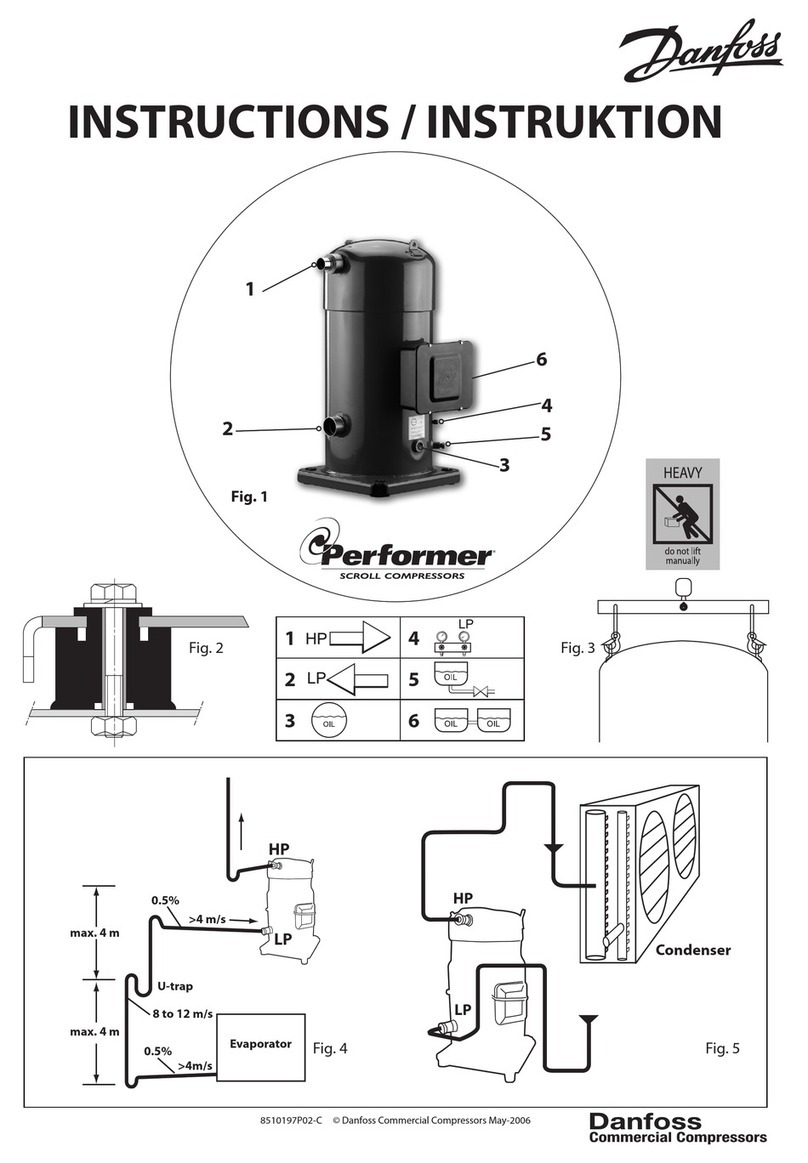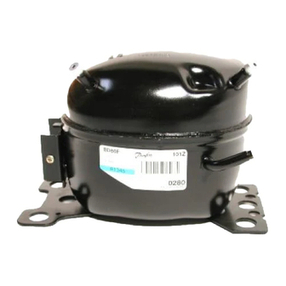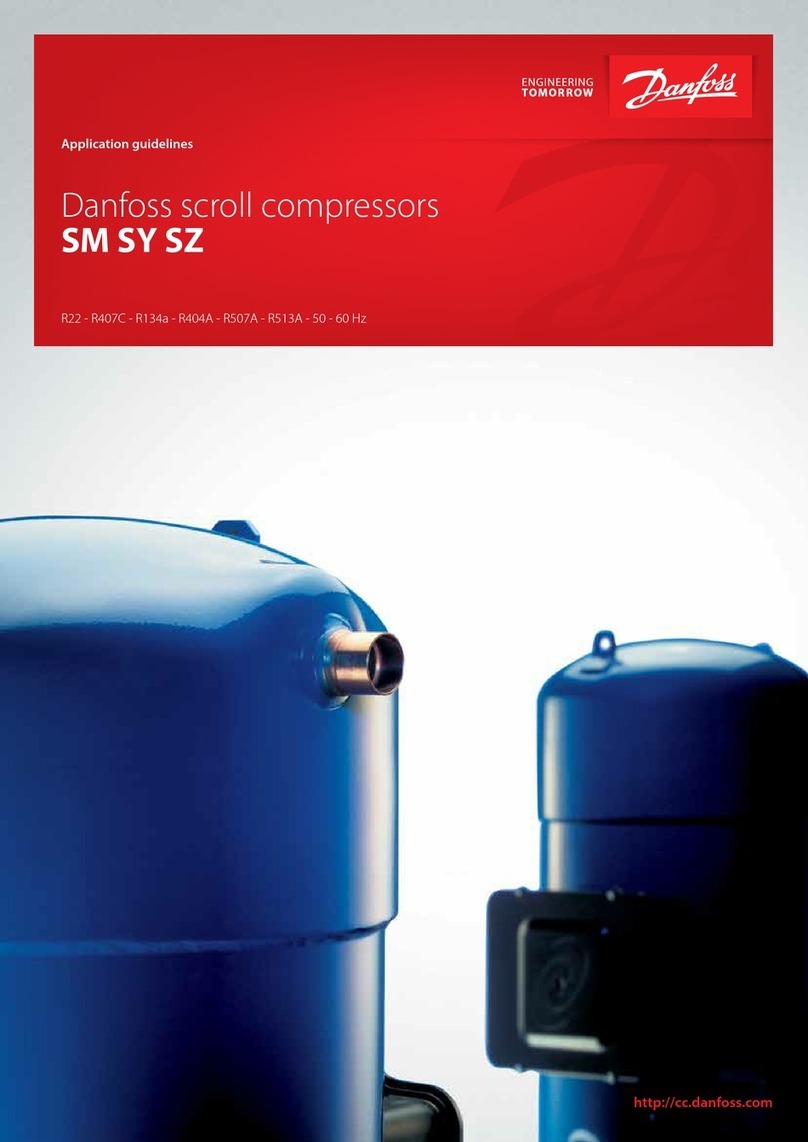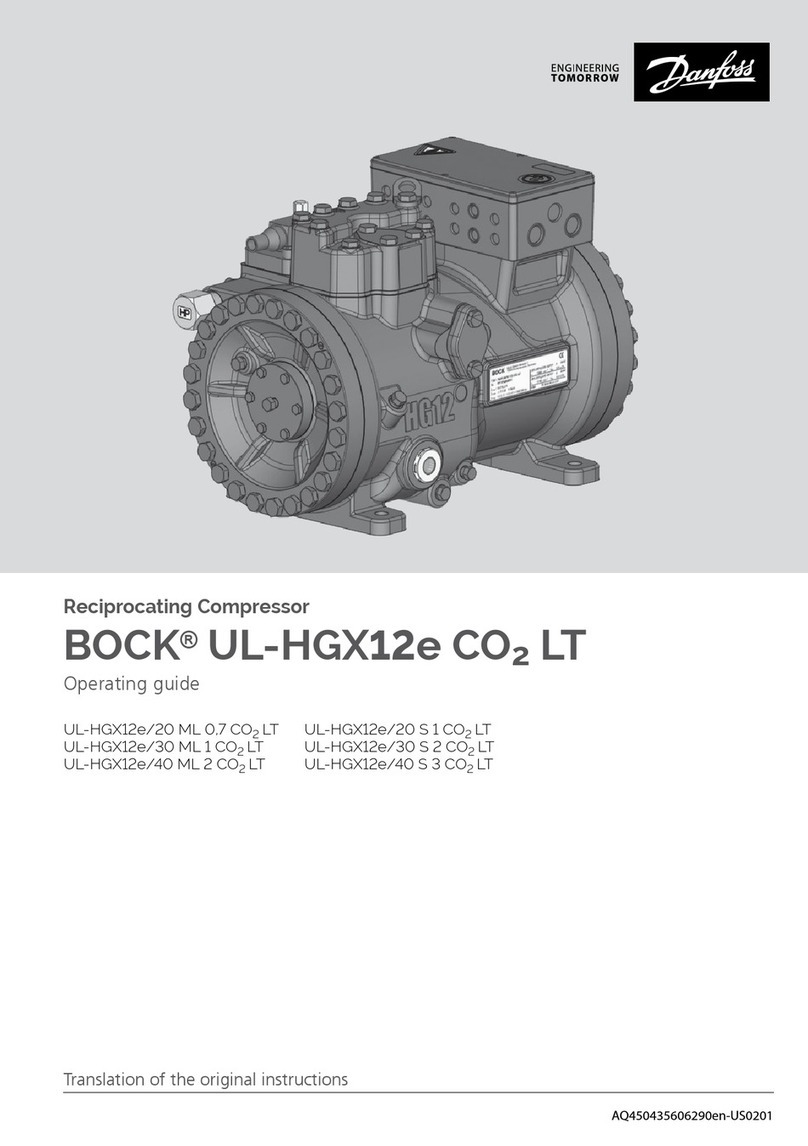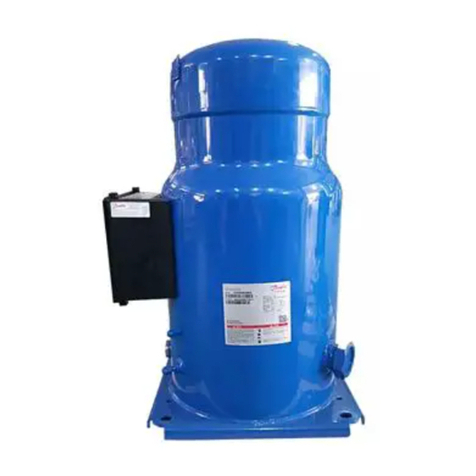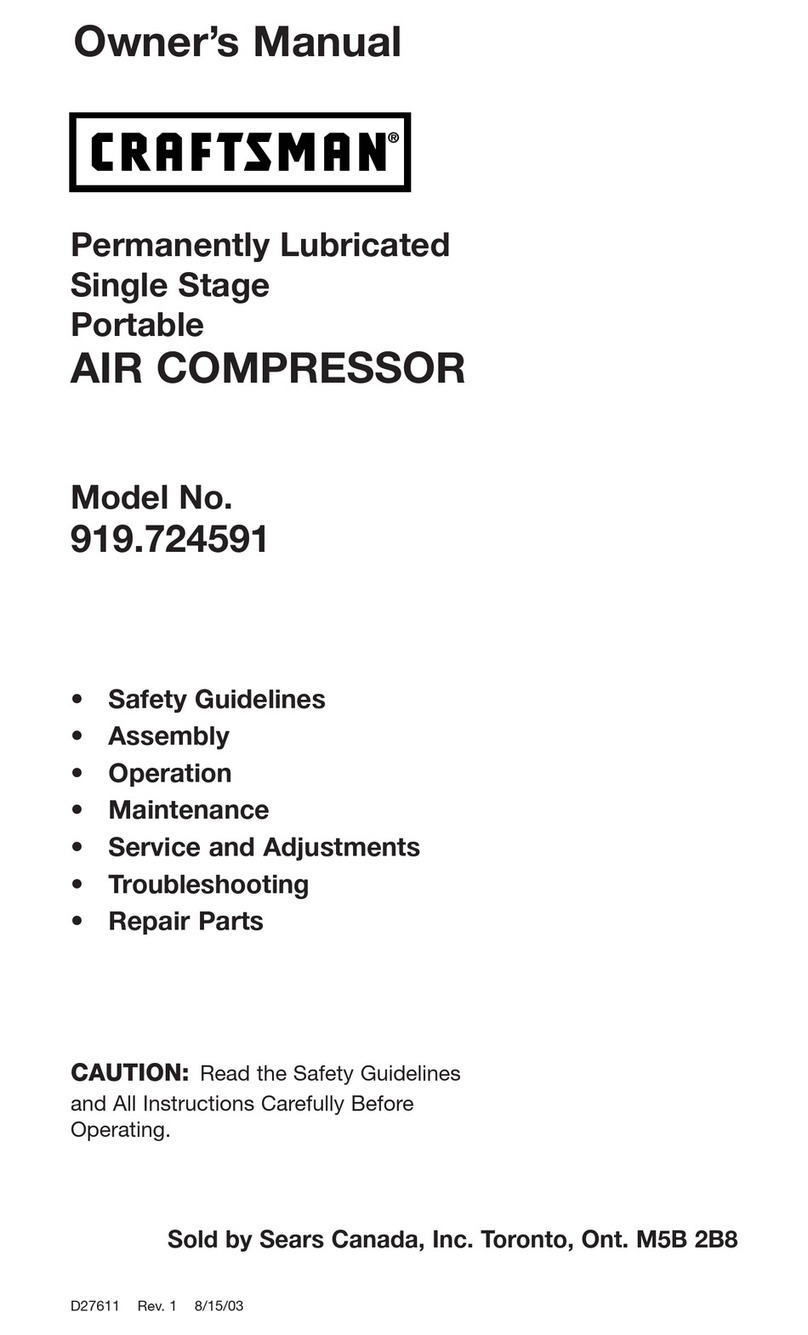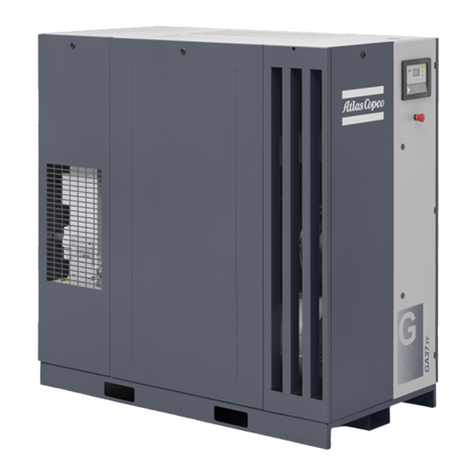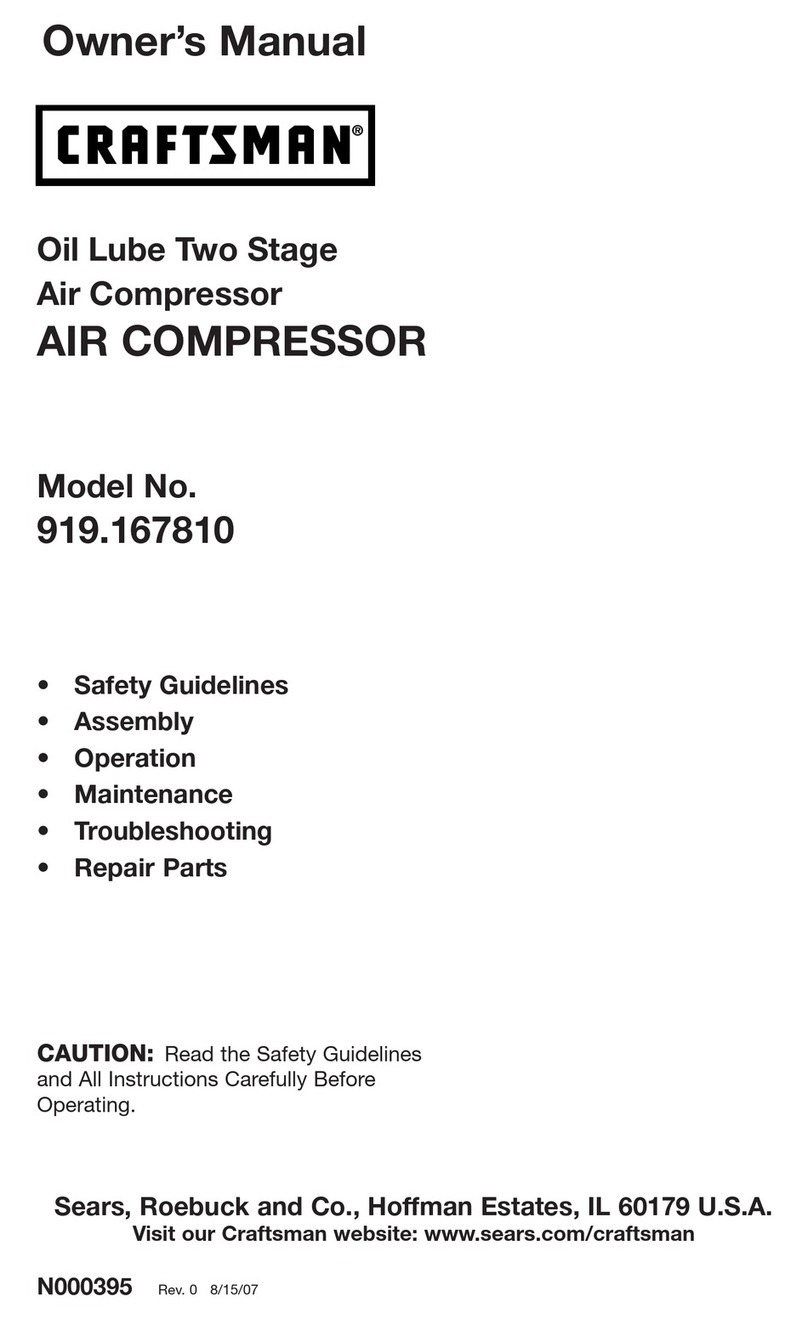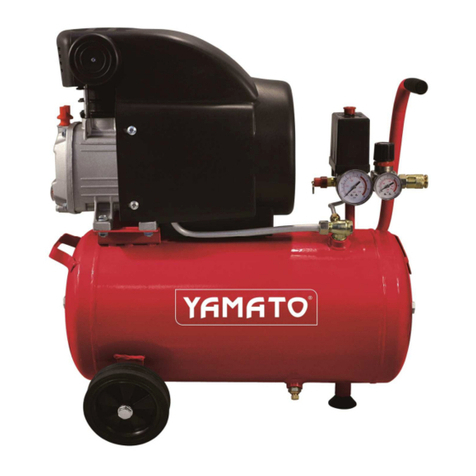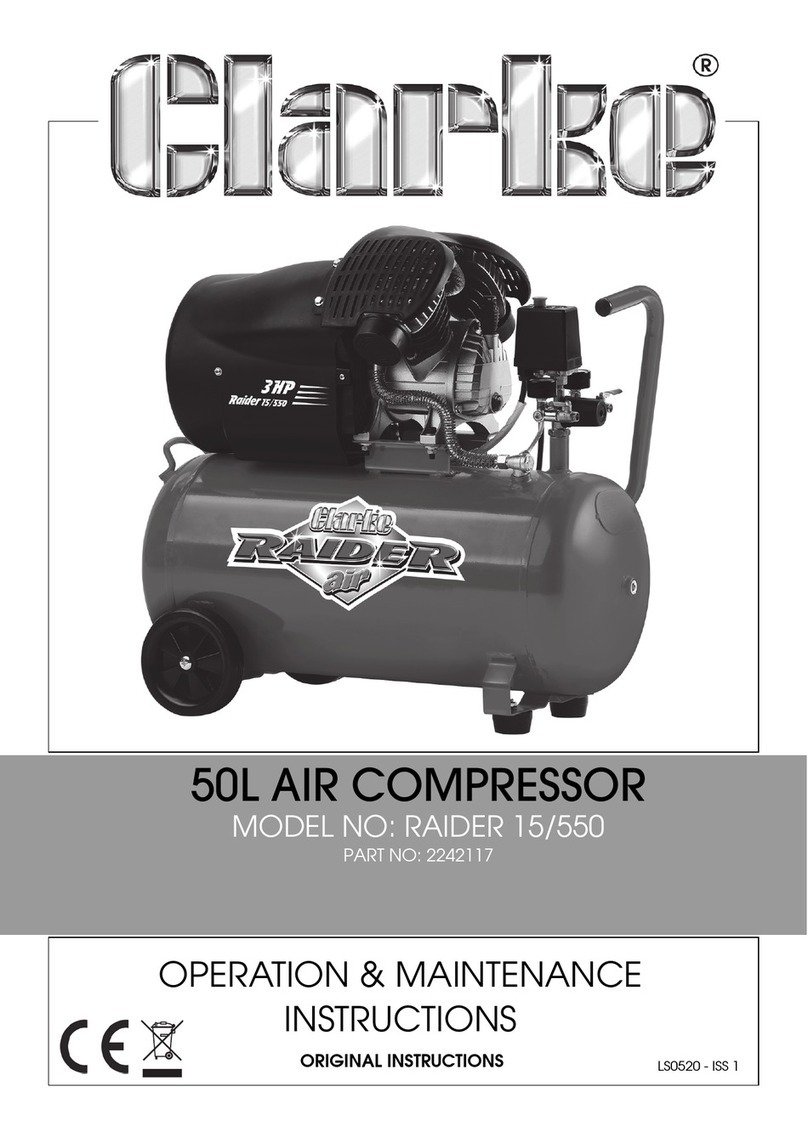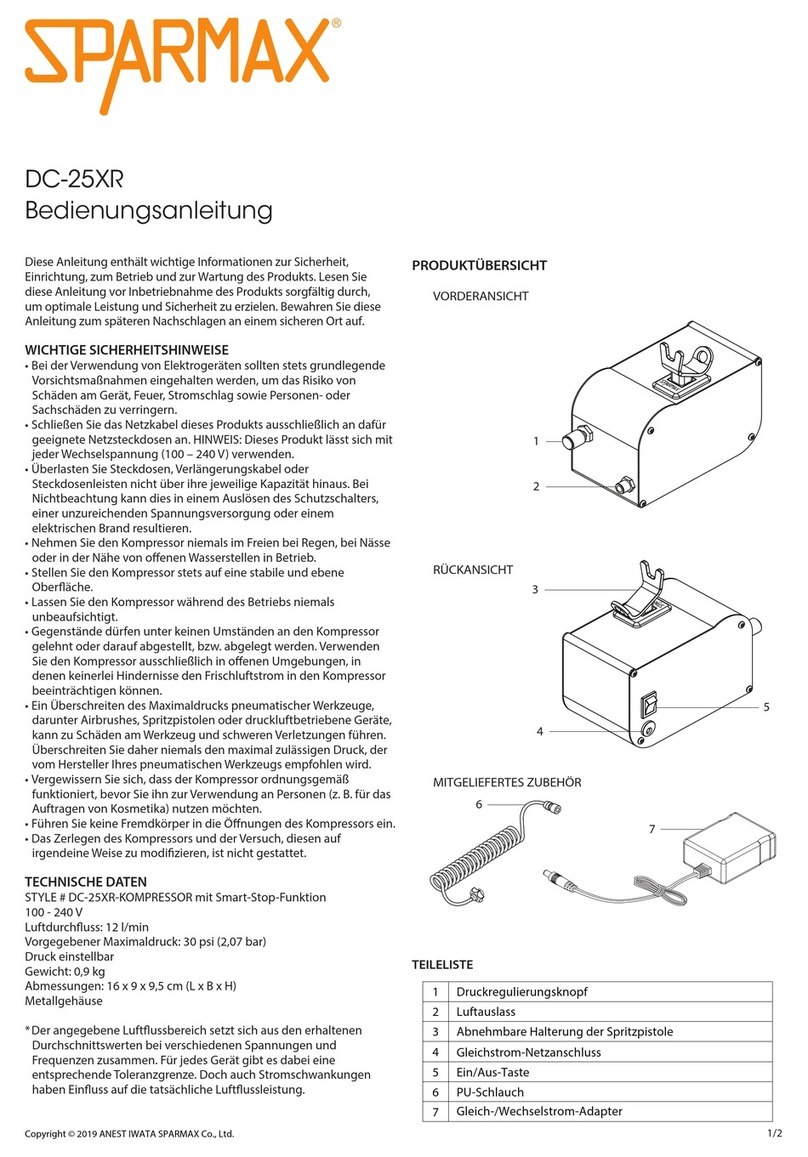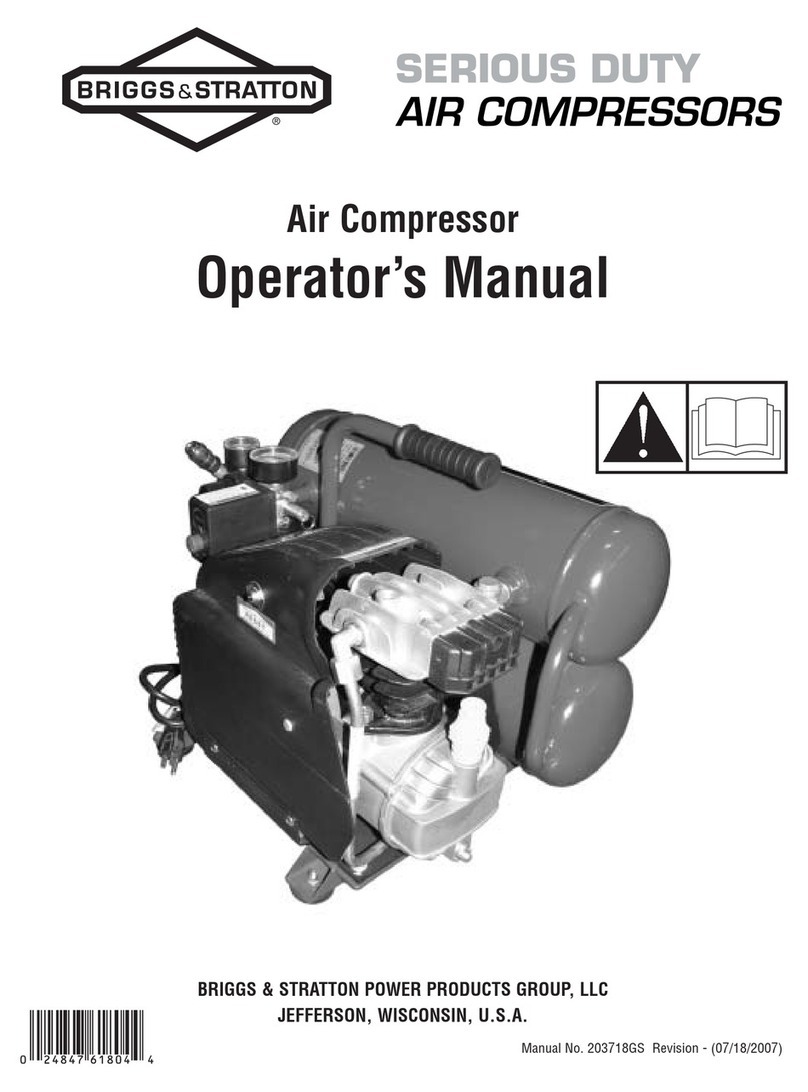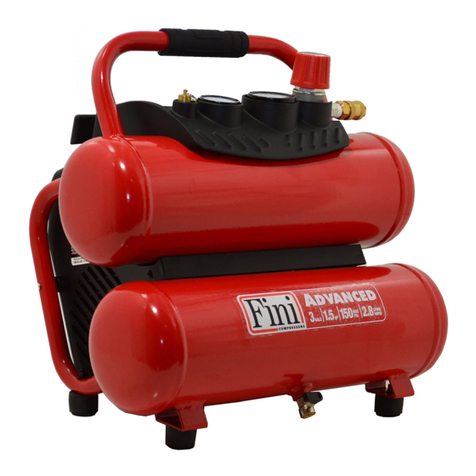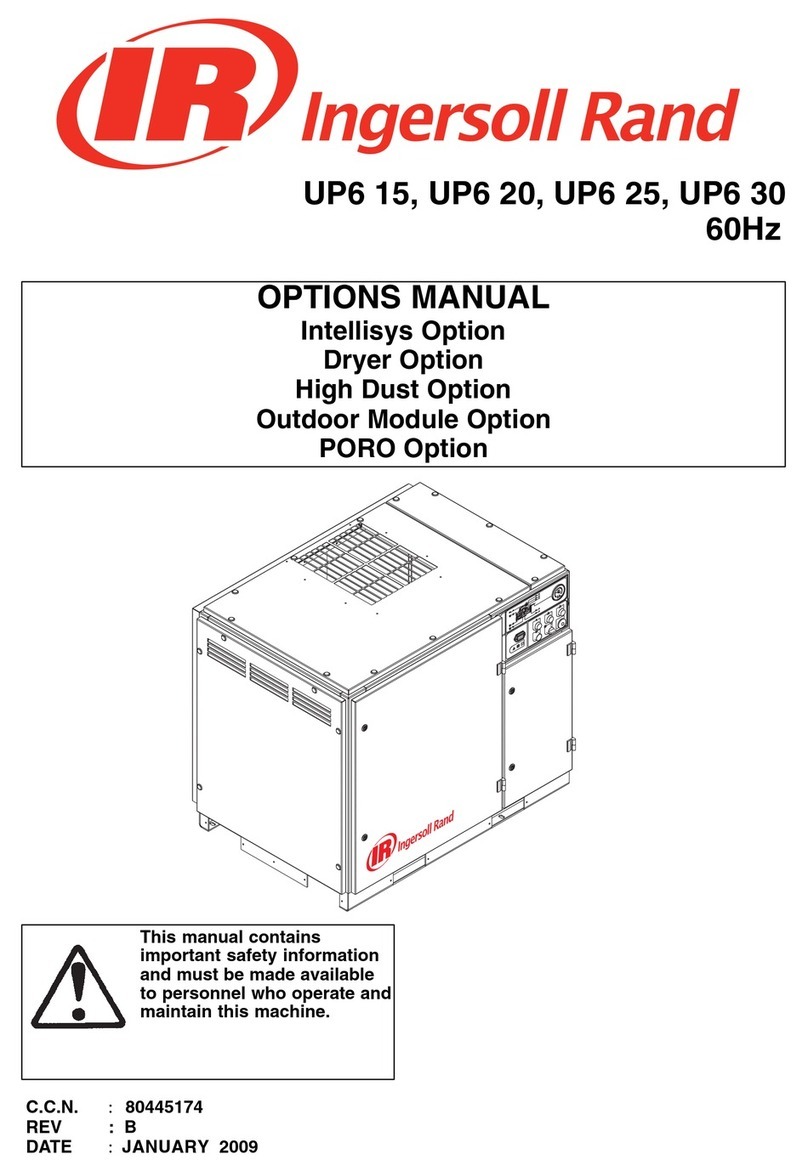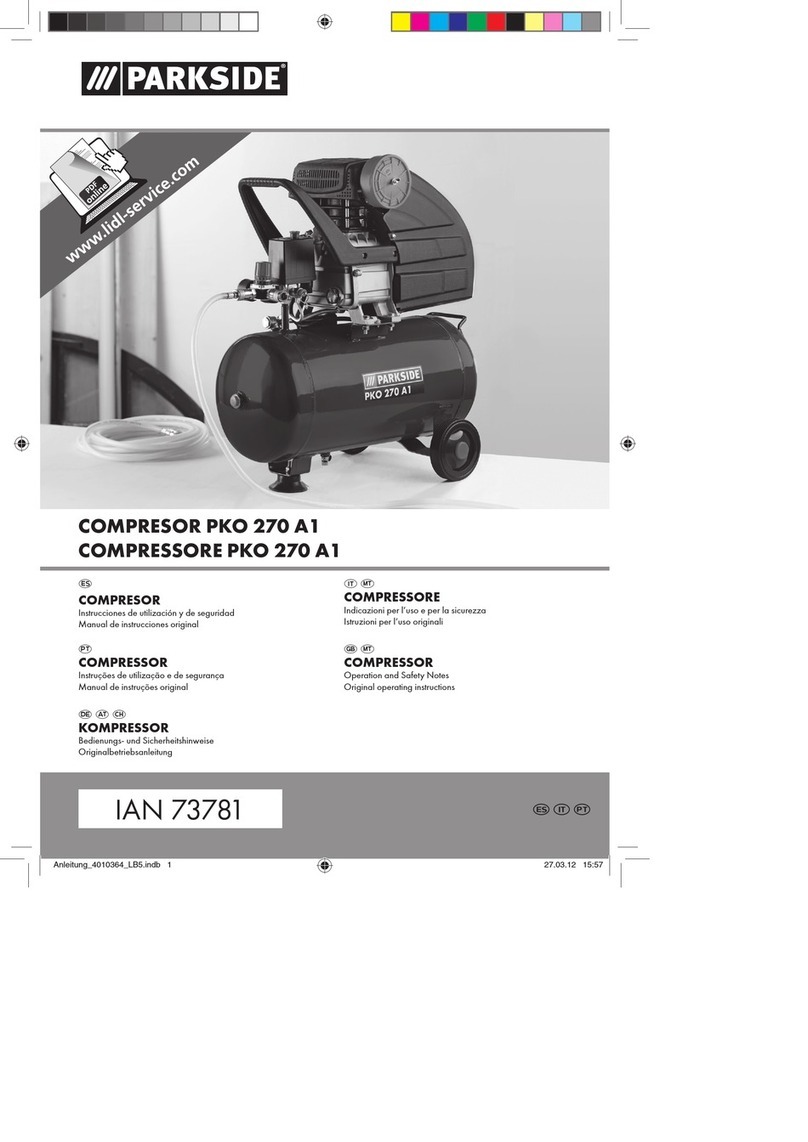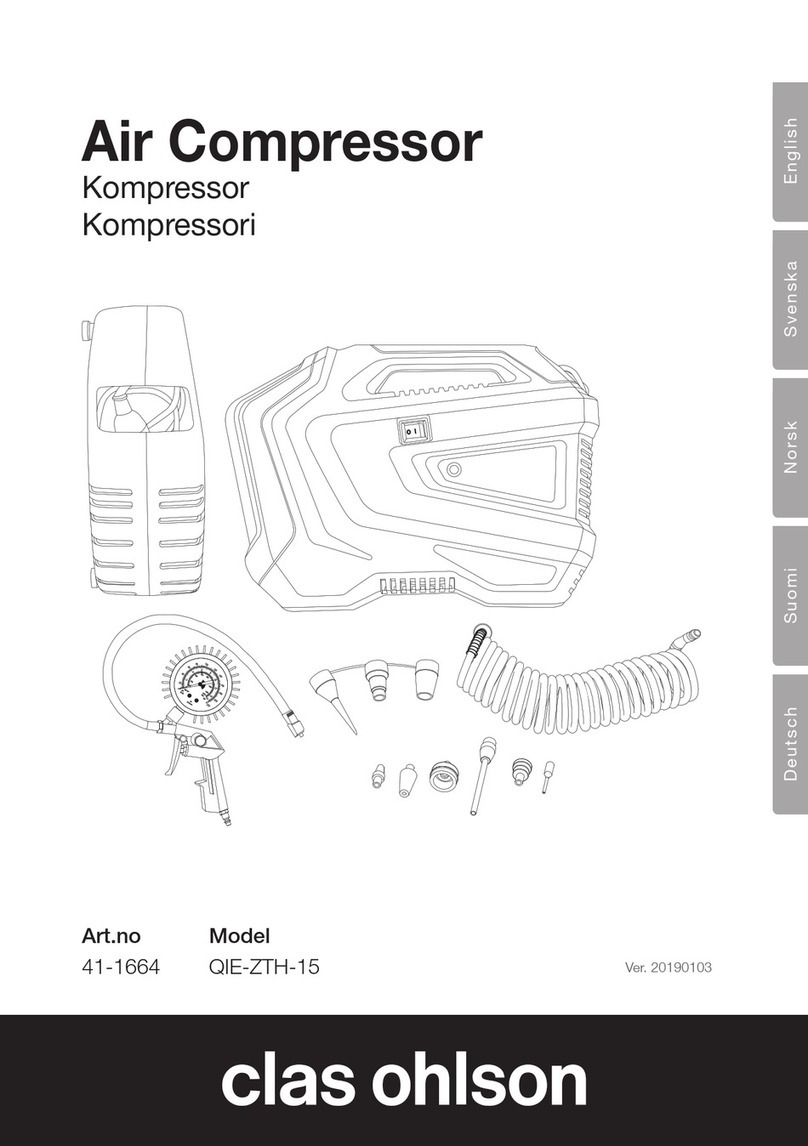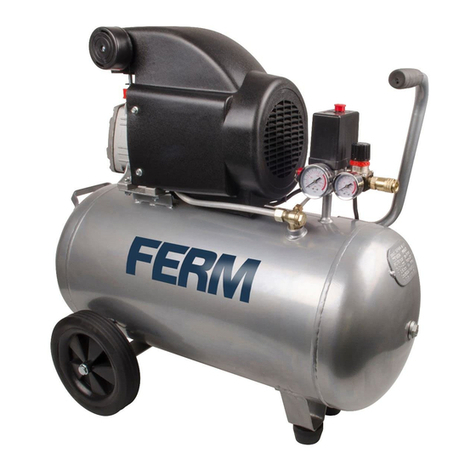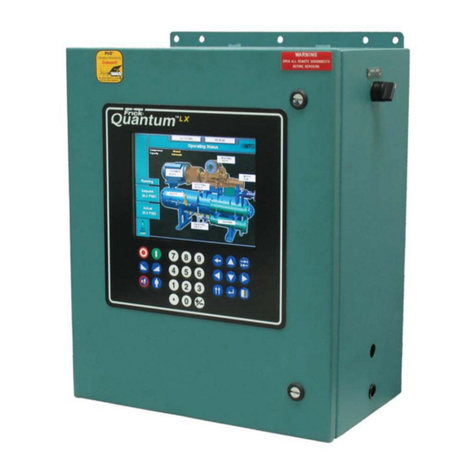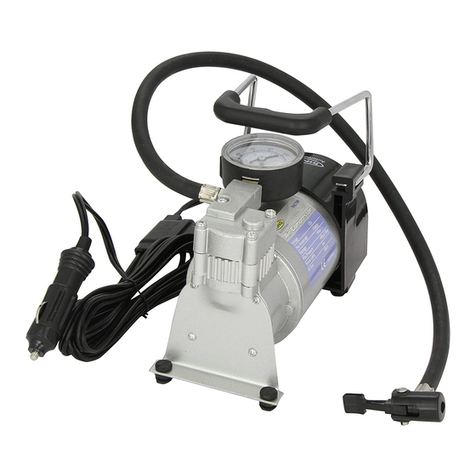
requires a rigid mounting on the rails. Use the
pre-mounted rigid spacers.
• Slowly release the nitrogen holding charge
through the schrader port.
• Connect the compressor to the system as soon
as possible to avoid oil contamination from
ambient moisture.
• Avoid material entering into the system while
cutting tubes. Never drill holes where burrs
cannot be removed.
• Braze with great care using state-of-the-art
technique and vent piping with nitrogen gas ow.
• Connect the required safety and control
devices. When the schrader port is used for
this, remove the internal valve.
• The liquid injection valve must be fed by liquid,
picked-up on the liquid line of the system,
downstream the lter drier.
• Protect the compressor and the liquid injection
valve against heat while brazing the liquid line.
5 – Leak detection
Never pressurize the circuit with oxygen or
dry air. This could cause re or explosion.
• Pressurize the system on HP side rst and then on
LP side. Never let the pressure on LP side exceed
the pressure on HP side with more than 5 bar.
Such pressure dierence could cause internal
compressor damage.
• Do not use dye for leak detection.
• Perform a leak detection test on the complete
system.
• The test pressure must not exceed :
Models LP side HP side
PSH051.064.077 30 bar 48 bar
• When a leak is discovered, repair the leak and
repeat the leak detection.
6 – Vacuum dehydration
• Never use the compressor to evacuate the
system.
• Connect a vacuum pump to both the LP & HP
sides.
• Pull down the system under a vacuum of 500
µm Hg (0.67 mbar) absolute.
• Do not use a megohmmeter nor apply power
to the compressor while it is under vacuum as
this may cause internal damage.
7 – Electrical connections
• Switch o and isolate the main power supply.
• All electrical components must be selected as per
local standards and compressor requirements.
• The scroll compressor only works correctly in
one rotation direction. Line phases L1, L2, L3
must absolutely be connected to compressor
terminals T1, T2, T3 to avoid reverse rotation.
• Use ø 4.8 mm (3/16”) screws and ¼” ring
terminals for the power connection. Fasten
with 3 Nm torque.
• The compressor must be connected to earth
with the 5 mm earth terminal screw.
• Connect the discharge temperature sensor cable
plug to the sensor on the compressor top shell.
• Connect the OCS to power supply and earth
• Connect the low pressure (LP) and high
pressure (HP) transmitters to the OCS. These
are mandatory for the operating envelope
monitoring function.
• Only one set of LP/HP transmitters is
mandatory for manifolds.
• Connect the M1-M2 control circuit to the OCS
• Further connections to the OCS are factory-
prepared; DGT sensor (Discharge Gas
Temperature), Heater (Surface Sump Heater),
motor protection, phase monitoring, LIV
valve (liquid injection valve). The connector
positions are written on the OCS protection
cover.
To avoid personal injury, with 230V OCS, do
not forget to connect the earth, and to check for
earth continuity.
8 – Filling the system
• Keep the compressor switched o.
• Fill the refrigerant in liquid phase into the
condenser or liquid receiver. The charge must
be as close as possible to the nominal system
charge to avoid low pressure operation and
excessive superheat. Never let the pressure on
LP side exceed the pressure on HP side with
more than 5 bar. Such pressure dierence could
cause internal compressor damage.
• Keep the refrigerant charge below the
indicated charge limits if possible. Above this
limit; protect the compressor against liquid
ood-back with a pump-down cycle or suction
line accumulator.
• Never leave the lling cylinder connected to
the circuit.
Compressor models Refrigerant charge limit (kg)
PSH051.064 13.5
PSH077 14.5
9 – Verification before commissioning
Use safety devices such as safety pressure
switch and mechanical relief valve in compliance
with both generally and locally applicable
regulations and safety standards. Ensure that
they are operational and properly set.
Check that the settings of high-pressure switches
and relief valves don’t exceed the maximum service
pressure of any system component.
• A low-pressure switch is recommended to
avoid vacuum operation. Minimum setting for
PSH: 2.1 bar g.
• Verify that all electrical connections are
properly fastened and in compliance with local
regulations.
• Ensure that the liquid injection valve (LIV) coil
is correctly positioned on the LIV body: one of
the lock pins on the coil must t into one of the
dents on the valve body.
10 – Start-up
• Never start the compressor when no refrigerant
is charged.
• All service valves must be in the open position.
• Balance the HP/LP pressure.
• Energize the compressor. It must start promptly.
If the compressor does not start, check wiring
conformity and voltage on terminals.
• If the internal pressure relief valve is opened
(PSH), the compressor sump will be warm and the
compressor will trip out on the motor protector.
11 – Check with running compressor
• Check current draw and voltage.
• Check suction superheat to reduce risk of
slugging.
• Observe the oil level in the sight glass for about
60 minutes to ensure proper oil return to the
compressor.
• Check all tubes for abnormal vibration.
Movements in excess of 1.5 mm require
corrective measures such as tube brackets.
• When needed, additional refrigerant in liquid
phase may be added in the low-pressure side
as far as possible from the compressor. The
compressor must be operating during this
process.
• Do not overcharge the system.
• Never release refrigerant to atmosphere.
• Before leaving the installation site, carry out
a general installation inspection regarding
cleanliness, noise and leak detection.
• Record type and amount of refrigerant charge
as well as operating conditions as a reference
for future inspections.
• Before leaving the installation site, clear
eventual warnings and alarms in the OCS to
facilitate futur maintenance checks.
12 – Maintenance
Internal pressure and surface temperature
are dangerous and may cause permanent injury.
Maintenance operators and installers require
appropriate skills and tools. Tubing temperature
may exceed 100°C and can cause severe burns.
Ensure that periodic service inspections to
ensure system reliability and as required by local
regulations are performed.
To prevent system related compressor problems,
following periodic maintenance is recommended:
• Verify that safety devices are operational and
properly set.
• Ensure that the system is leak tight.
• Check the compressor current draw.
• Conrm that the system is operating in a way
consistent with previous maintenance records
and ambient conditions.
• Check that all electrical connections are still
adequately fastened.
• Keep the compressor clean and verify
the absence of rust and oxidation on the
compressor shell, tubes and electrical
connections.
• Check and clear alarms and warnings.
• Check correct operation of the surface sump
heater.
13 - Warranty
Always transmit the model number and serial number
with any claim filed regarding this product.
The product warranty may be void in following cases:
• Absence of nameplate.
• External modications; in particular, drilling,
welding, broken feet and shock marks.
• Compressor opened or returned unsealed.
• Rust, water or leak detection dye inside the
compressor.
• Use of a refrigerant or lubricant not approved
by Danfoss.
• Any deviation from recommended instructions
pertaining to installation, application or
maintenance.
• Use in mobile applications.
• Use in explosive atmospheric environment.
• No model number or serial number transmitted
with the warranty claim.
14 – Disposal
Danfoss recommends that compressors
and compressor oil should be recycled
by a suitable company at its site.
Danfoss can accept no responsibility for possible errors in catalogues, brochures and other printed material. Danfoss reserves the right to alter its products without notice. This also applies to products
already on order provided that such alterations can be made without subsequential changes being necessary in specications already agreed.
All trademarks in this material are property of the respective companies. Danfoss and the Danfoss logotype are trademarks of Danfoss A/S. All rights reserved.
FRCC.PI.018.A3.02 - November 2014 © Copyright Danfoss | Commercial Compressors | 2014.11
